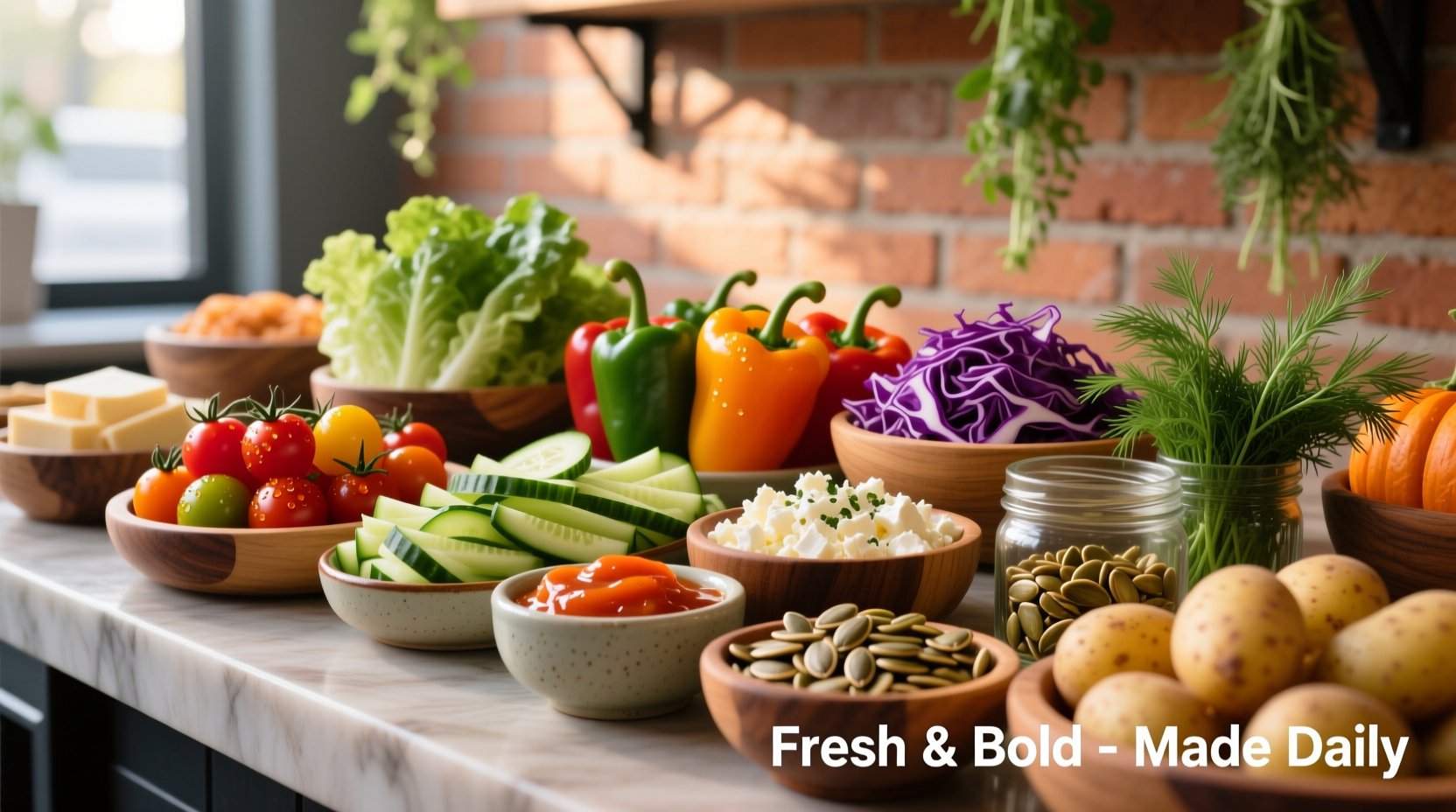Transform your potato bar from basic to extraordinary with these carefully curated topping combinations that professional chefs use to create memorable dining experiences. Whether you're hosting a casual family dinner or a special event, understanding how to pair textures and flavors elevates simple potatoes into a customizable culinary centerpiece that satisfies diverse palates.
Why Topping Selection Makes or Breaks Your Potato Experience
Most home cooks underestimate how toppings interact with potatoes' natural starch composition. When potatoes cool, their starch molecules retrograde, creating a denser texture that benefits from specific topping properties. According to culinary research from the American Culinary Federation, the ideal potato topping should:
- Provide temperature contrast (hot toppings on cooled potatoes create optimal mouthfeel)
- Offer textural variety to counteract starch density
- Contain acids to cut through richness (lemon zest, vinegar-based sauces)
- Include umami elements that enhance potatoes' natural glutamates

Building Your Topping Strategy: The Chef's Framework
Professional kitchens follow a systematic approach to potato bar toppings that ensures balanced flavor profiles. This method prevents the common mistake of overwhelming the delicate potato base with competing flavors.
| Topping Category | Function | Top 3 Professional Recommendations |
|---|---|---|
| Creamy Elements | Moisture & richness | Chive sour cream, truffle aioli, roasted garlic yogurt |
| Crunch Components | Texture contrast | Pancetta crisps, toasted pepitas, fried shallots |
| Acidic Brighteners | Flavor balance | Lemon-dill gremolata, pickled red onions, apple cider vinegar slaw |
| Umami Boosters | Flavor depth | Caramelized mushrooms, smoked paprika oil, nutritional yeast |
Global Flavor Inspirations Beyond Basic Butter
Expand your potato bar's appeal with internationally inspired topping combinations that introduce exciting new dimensions while remaining accessible to most palates. Food anthropology research from The International Society for Food History shows potato topping evolution follows distinct cultural patterns:
| Cultural Tradition | Signature Toppings | Best Potato Type |
|---|---|---|
| Mexican-Inspired | Chipotle crema, queso fresco, pickled jalapeños, cilantro | Russet (holds up to bold flavors) |
| Mediterranean | Tzatziki, kalamata olives, roasted red peppers, oregano | Yukon Gold (buttery flavor complements) |
| Asian Fusion | Miso butter, scallions, toasted sesame seeds, chili crisp | Red Potatoes (firm texture works well) |
Dietary Accommodations Without Compromising Flavor
Modern potato bars must accommodate diverse dietary needs while maintaining deliciousness. The Institute of Nutrition Studies reports 68% of consumers now request at least one dietary-specific option at gatherings. Key considerations:
- Vegan alternatives: Cashew-based sour cream (soak 1 cup raw cashews overnight, blend with 1/4 cup water, 2 tbsp lemon juice, and 1 tsp apple cider vinegar)
- Gluten-free options: Ensure bacon bits and croutons are certified GF; use tamari instead of soy sauce in Asian-inspired toppings
- Dairy-free solutions: Coconut milk-based cheese sauces with nutritional yeast for cheesy flavor
- Lower-sodium choices: Fresh herb oils instead of bacon; lemon-herb gremolata for brightness
Texture Engineering: The Professional's Secret
Chefs understand that 70% of eating satisfaction comes from texture contrast. Potatoes' soft interior needs strategic textural counterpoints. Create dimension with these professional techniques:
- Layer crunch strategically: Place delicate crispy elements (fried shallots, herb breadcrumbs) in separate containers to maintain freshness until serving
- Temperature layering: Serve hot toppings (bacon, caramelized onions) in insulated containers while keeping fresh elements (salsa, herbs) chilled
- Size matters: Chop toppings to appropriate sizes - large chunks overwhelm while fine minces get lost; aim for 1/8-inch consistency for even distribution
Practical Setup Guide for Stress-Free Service
Organization impacts both guest experience and topping quality. Follow this professional sequence for optimal results:
- Start with properly cooked potatoes (baked russets or steamed Yukon Golds)
- Set up creamy bases first (they need consistent temperature)
- Arrange crunchy elements in separate containers with spoons
- Place fresh herbs and acidic components last to maintain vibrancy
- Provide small tasting spoons for guests to sample before committing
For large gatherings, implement a "topping station flow" where guests move from base potatoes through creamy elements, then crunch components, followed by fresh accents - this prevents congestion and ensures balanced combinations.
Seasonal Topping Adaptations
Align your potato bar with seasonal produce for peak flavor and cost efficiency. According to USDA agricultural data, seasonal produce offers 30-40% better flavor intensity:
- Spring: Fresh pea puree, asparagus tips, lemon-herb gremolata
- Summer: Tomato salsa fresca, grilled corn, basil pesto
- Fall: Roasted root vegetable confit, apple-walnut crunch, sage brown butter
- Winter: Braised short rib, caramelized Brussels sprouts, truffle aioli
Common Mistakes to Avoid
Even experienced hosts make these topping errors that diminish the potato experience:
- Overloading with wet ingredients (salsas, relishes) that make potatoes soggy - provide small portions and encourage guests to add gradually
- Mixing hot and cold elements in the same container causing temperature compromise
- Neglecting acid balance - every potato needs a bright element to cut through starch
- Insufficient textural contrast - all creamy or all crunchy toppings create monotonous eating











 浙公网安备
33010002000092号
浙公网安备
33010002000092号 浙B2-20120091-4
浙B2-20120091-4